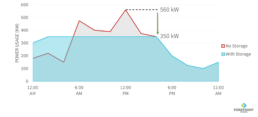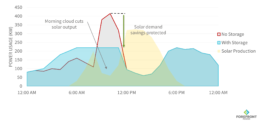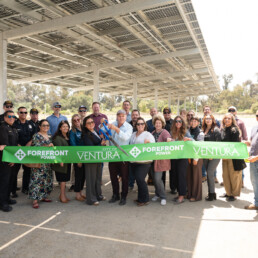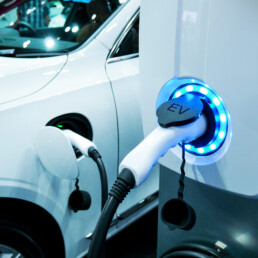
The term “Smart City” is a heavily touted term in the energy industry, which may conjure up images of flying cars and AI-powered robots. However, for many small-to-mid-sized cities or municipalities that have and want to preserve their historical charm, becoming a futuristic-looking metropolis could be less appealing.
In reality, a Smart City is one that leverages energy technologies to save money, ensure resiliency, and potentially even increase revenue. Energy storage, when paired with solar, is the one technology that can deliver all three of these value streams. Keep reading to learn how energy storage can help make your city or municipality a more efficient and safer place to live – no flying cars required.
What is Energy Storage?
Energy storage systems commonly use innovative lithium-ion battery technology coupled with advanced software to reduce operating costs and increase flexibility and resiliency when electricity prices are high, or supply is scarce.
The Benefits
Utility Bill Optimization: Demand Charge Management and Energy Arbitrage
The state of California has the 7th highest electricity prices in the country. Due to shifting TOU rates and utility variability, electricity costs will likely continue to rise in California. Energy storage can help customers manage increasing utility costs by shifting energy usage to reduce demand and energy charges.
Energy storage provides demand charge management by discharging during demand spikes and flattening your overall electricity usage. Demand charges, which are determined by the highest measured kW load during a billing period, can account for more than half of a customer’s utility bill. ForeFront Power’s energy storage discharges when your demand is the highest, therefore reducing the total demand charges that you pay to the utility.
How Energy Storage Works (Without Solar)

Energy arbitrage presents another opportunity to lower electricity costs. Customers benefit from energy arbitrage when batteries charge during periods of low prices and offset demand when the prices are high. Advanced AI-based energy storage software learns the customer’s usage patterns and automatically dispatches the battery to maximize savings in both demand and energy charges.
When combining energy storage with solar, customers receive additional value from the Investment Tax Credit (“ITC”). ForeFront Power provides advanced energy storage offerings designed to operate seamlessly with our solar solutions to maximize value for the customer. Solar systems are highly dependent on sunny days to reduce demand and can drop in production with a single cloud. Our energy storage systems add the much-needed reliability to solar projects by “firming” this capacity and reducing fluctuations in energy output.
How Energy Storage Works (With Solar)

Additional Revenues
In addition to utility bill optimization, customers in California can benefit from additional revenues from programs such as demand response and virtual power plants. While such programs constantly change and new ones become available, energy storage software is continuously updated to best cater to the changing electric grid. When installing energy storage at your facility today, you’re making an investment in the future as energy storage value will continue to increase.
Resiliency and Backup Power
Energy storage systems are not only a great way to hedge against rising utility costs; they can also provide valuable backup power during grid outages. If the energy storage system is designed with “islanding” capabilities, it can serve your facilities during a public safety power shutoff (“PSPS”) event. A typical standalone battery storage system may provide about two to four hours of operation, depending on its size. Energy storage systems can also be integrated with solar and backup generators to serve as a fully independent microgrid and sustain operations during a multiple-day utility outage.
Click here to learn more about resiliency options.
Why Now?
SGIP Explained
Energy storage systems can be costly on their own, but thankfully an incentive program in California is helping to reduce costs.
The Self-Generation Incentive Program (SGIP) provides rebates to customers who install clean energy technologies – including energy storage – to serve their own loads. The SGIP program funds energy storage projects that are either standalone or paired with solar. Because funding for the program is collected from surcharges on the customer bills of electric and gas investor-owned utilities, SGIP covers nearly the entire state.
Increased incentive levels apply to certain customer types, including cities, counties and educational facilities that are located in low-income or disadvantaged areas. ForeFront Power will evaluate the eligibility of your facility to maximize your incentive amounts and manage the application process for you.
Is Energy Storage Right for You?
Integrating energy storage into city infrastructure clearly has many tangible benefits around cost-savings, flexibility, and resiliency. Want to take the first steps to understand if it is right for your city? Contact us to get a free, no-obligation assessment to see whether energy storage is a good fit. ForeFront Power will analyze your utility bill data, determine the optimal system size that maximizes savings and provide an estimate at no charge.

Interested in learning more?
We would love to discuss how our solutions might be a fit for your organization. Contact one of our solar, storage, or e-mobility experts today:







